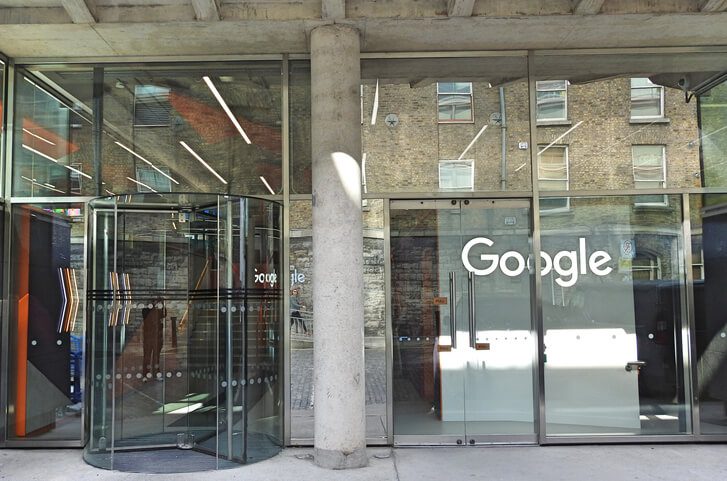Data and sustainability should be your best friends. Strategic planning will get a good smack in the face if you shy away from them. How to fix your marketing management and strategy?

Table Of Contents
The pandemic has brought changes to ecommerce that we can’t shake. Customer demands have increased, the customer journey has become more complex and competition is becoming more and more intense.
Google anticipates that some of the trends need to be adapted and all eshops should pay more attention to their digital marketing strategy implementation and practice.
Meet Data Modelling
Do you know which ads are the stars of your marketing? Data-driven modelling gives the best answers. If you’re not using it, switch it up in next year’s strategy.
There are multiple attribution models, and depending on the type you choose, Google Analytics (GA) decides which marketing channel took credit for the conversion.

Google has offered a data modelling option since 2014.
Freeze last-click modelling
Many eshops rely on a last-click attribution model or a default last-click attribution model: the last click of the last indirect visit.
Since 2014, GA has also offered data modelling, which provides a more realistic picture. It distinguishes between channels that bring conversions and those that just ride along.
Imagine the situation:
- A customer comes across an AdWords ad, visits the site, but doesn’t make a purchase.
- Three days later, they type in the name of the site directly, look at the offer, and don’t buy again.
- The next day, you remind them with Facebook remarketing. They visit the site, but still with no conversion.
- Still that evening, the offer doesn’t let them sleep, they enter the site directly, add the item to the cart and pay.
In the first case, GA assigns all the credit to the last source (in our case, the website). In the second case, to the penultimate source (Facebook) if the last one was direct (the website). However, neither the website nor the Facebook ad was the only reason why the customer made the purchase.
Neither of these models accounted for the fact that the conversion was also due to AdWords or properly set keywords.
Data and marketing strategy are friends
Data-driven attribution uses machine learning. It assigns a specific weight to each channel during the customer journey.
The algorithm also evaluates the effectiveness of the creative and the keywords used. This way, you’ll find out which channel increases the likelihood of conversion and which is less efficient.
With this information, you can invest more in the channels that play a key role in the customer’s decision.
Get High-Quality First Party Data
In 2022, you’ll only make limited use of cookies. Access to third-party cookies is ending on the most commonly used browsers. Adjust your strategy to focus on First Party Cookies.
Use Email for a Strategic Marketing
Email for a tempting quid pro quo: Collect as much data as possible about customers who actually visit your site or read your blog. Then use Google Affinity Audience to create audiences similar to them for ad targeting.
Data like name and email is only provided by customers in exchange for consideration. Typically, they get access to special offers, discount codes, or high-quality content that isn’t freely available to other site visitors.
Continue to try to collect this data from your customers. Test what they are willing to provide information for.
What if you don’t have direct customer contact?
A manufacturer of products that go further into the distribution network may have a problem with obtaining customer data. Basically, they never get the information.
The situation is fixable. Imagine a car manufacturer who has created an app to open/close the car and turn on the heating. In return for the extra functionality, they received valuable data directly from customers. With this data, they can improve both the user experience and sales.
Sustainability as a Green Marketing Strategy
Ecology and sustainability have been hot topics in recent years and interest is growing steadily. Especially from customers. In Germany, ecology was already the biggest topic last year.
No more talk about long-term ecological plans. It is still an important part of responsible business, but customers are impatient. Show them how they can live more sustainably today.

As your eshop grows rapidly, think about promised delivery times and communication with customers.
Sustainability as part of the brand
Customers are demanding recyclable packaging, rejecting artificial ingredients in cosmetics or food, and want to buy far more eco-friendly products than in the past.
Be sure to take this trend into account in your marketing strategy. Make sustainability part of your brand. Instead of a new product line, improve existing ones.
What can you do right now?
- Reduce the packaging materials you use when shipping your goods.
- Fill empty space in boxes with paper staples or degradable air pads.
- Add more eco-friendly products or improve the composition of existing products.
- Use shipping companies that are committed to reducing their carbon footprint to import goods. DHL GoGreen, DPD Total Zero and GLS Think Green are well-known initiatives.
Do You Need Help with Digital Marketing Strategy?
At Dexfinity, we work with data on a routine basis. Not only do we rely on it, but so do our clients. After all, the performance of both SEO and PPC campaigns depends on their quality. Would you like an international marketing strategy analysis development and implementation?
Go beyond with your eshop. We will help you prepare next year’s digital marketing strategy for your business growth.
Thanks to the Dexfinity Editorial Staff for Creating This Article
Author: Adriána Černáčková
Editor: Martin Bartl
Translator: Mária Streďanská
Published by: Róbert Hošták

DIRECT CONTACTS
Let's Join Forces!
Show us your project and we will talk about its growth potential.

Pavol Adamčák
Executive Director
+421 918 435 105
pavol.adamcak@dexfinity.com

Vladimír Nociar
Head of Business Development team
+421 903 568 464
vladimir.nociar@dexfinity.com
Choose what you are interested in and feel free to mark multiple choices.





